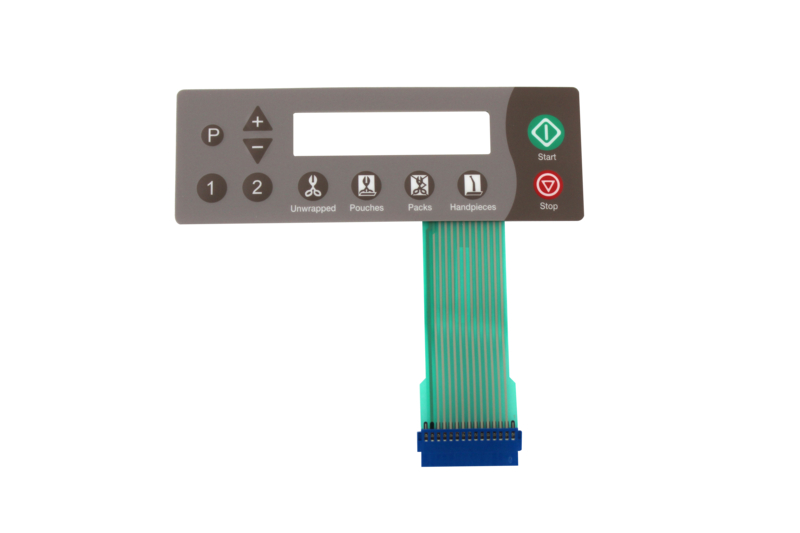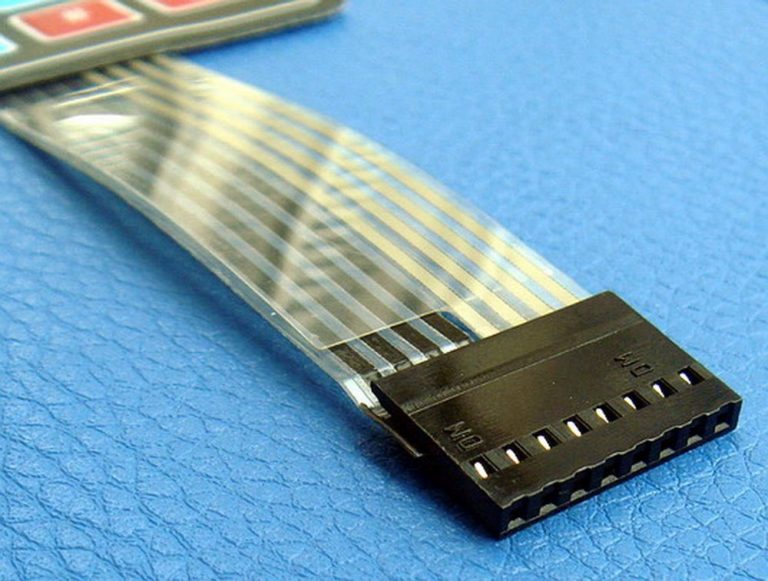You’ll experience the difference when collaborating with a high-quality membrane switch manufacturer.
You’ll experience the difference when collaborating with a high-quality membrane switch manufacturer.
Blog Article
All Concerning Membrane Layer Change: Recognizing Its Style and Performance
When you consider the control interfaces in modern tools, membrane buttons usually enter your mind. These components are extra than simply switches; they blend design and performance perfectly. Recognizing how they work and what makes them efficient can transform your perspective on day-to-day electronics. But, there are subtleties to their style and performance that you could not understand. Let's explore what sets membrane layer switches over in addition to various other control systems.
What Are Membrane Layer Switches?

Their smooth nature makes them easy to tidy and resistant to dirt and dampness, an important feature in numerous environments. Membrane switches can likewise be customized pertaining to shape, size, and graphics, allowing manufacturers to produce special user interfaces customized to specific products. Plus, they're light-weight and slim, which assists in lessening the general bulk of devices. Generally, membrane layer buttons play a considerable function in enhancing user experience throughout a vast variety of applications.
Exactly How Membrane Layer Switches Work
When you push a trick on a membrane switch, it activates a straightforward yet effective system. The top layer, typically made from versatile material, presses down onto a conductive layer below it. This activity bridges the gap in between conductive traces, completing an electric circuit. As soon as the circuit shuts, it sends a signal to the gadget's controller, which interprets your input.
You'll observe that the tactile feedback differs based upon the button design, supplying either a soft click or a more noticable action. When you launch the secret, the membrane go back to its initial setting, reopening the circuit and quiting the signal. This process happens practically instantaneously, making certain a responsive user experience.
Membrane switches are prominent as a result of their resilience and resistance to dust and dampness, making them ideal for different applications, from family home appliances to medical gadgets. Comprehending this procedure helps you value their prevalent use.
Trick Elements of Membrane Layer Buttons
Comprehending the vital components of membrane layer buttons is essential for grasping their performance and design. The safety layer shields against environmental aspects and put on, expanding the button's life-span. By comprehending these elements, you'll gain insight right into just how membrane layer switches over run and their relevance in different applications.
Materials Used in Membrane Switch Design
The performance and durability of membrane changes heavily depend on the products used in their design. You generally come across polyester and polycarbonate as main substratums because of their superb strength and versatility. These products withstand scratches and chemicals, making them excellent for requiring atmospheres.
The conductive layers usually make use of silver or carbon, chosen for their dependability and conductivity. membrane switch manufacturer. Silver gives remarkable performance, while carbon is an affordable choice. For the overlay, you might consider a matte or glossy surface, relying on your visual demands and individual experience
Make certain to choose adhesives that stand up to environmental variables like temperature level and humidity. Selecting the ideal products will ensure your membrane layer button stands the examination of time.
Style Factors To Consider for Membrane Buttons
While making membrane layer switches, it's vital to consider various elements that affect their functionality and customer experience. Begin by concentrating on the layout and button dimension; make sure they're intuitive and simple to navigate. Consider the responsive feedback you intend to offer-- will customers require a noticeable click or a softer touch? Furthermore, believe about the materials you'll use, as they'll impact sturdiness and looks.
Do not forget the visuals style; clear labeling and color comparison are substantial for visibility. Validate your design fits ecological aspects, like moisture or temperature level variations, which can affect efficiency. Remember the visit this site value of screening prototypes with actual customers to collect responses and make required modifications. This repetitive process helps you refine the style, validating it fulfills both functional and aesthetic needs effectively. By carefully considering these aspects, you'll develop a membrane button that boosts use and contentment.
Applications of Membrane Buttons
Membrane layer switches are functional components located in various applications, from industrial equipment to customer electronic devices. You'll see their effect in makers that need sturdy interfaces and in gadgets that profit from smooth layouts. Recognizing these applications assists you appreciate the functionality and practicality of membrane buttons in everyday modern technology.
Industrial Devices Usage
When you're wanting to improve the performance of commercial devices, membrane switches provide a trustworthy option that integrates resilience with straightforward design. These buttons are ideal for rough environments, supplying resistance to dust, wetness, and chemicals. You'll find them in control panels for producing machines, heating and cooling systems, and medical devices, where accuracy and responsiveness are vital. Their low profile means they fit flawlessly into different equipment, conserving beneficial area while preserving convenience of use. With personalized graphics and backlighting alternatives, you can produce an user-friendly interface for operators, boosting performance and safety. And also, their long life expectancy lowers upkeep prices, making them a clever investment for your industrial applications. Embrace membrane buttons to enhance your operations and boost general efficiency.
Consumer Electronic Devices Combination
In the domain of consumer electronics, membrane switches play an important duty in improving user communication and device capability. Membrane layer buttons also ensure durability and resistance to dust and wetness, prolonging the lifespan of your electronic devices. By selecting membrane layer switches, you enhance not just the performance yet also the design of your devices, making everyday interactions smooth and satisfying.
Advantages and Disadvantages of Membrane Layer Buttons
While membrane buttons supply a series of benefits, they also come with some drawbacks that you ought to consider. One substantial benefit is their portable style, making them excellent for space-constrained applications. They're also economical, providing a sturdy remedy with a low production cost. On top of that, their smooth surface is very easy to clean, improving hygiene in atmospheres like hospitals. his explanation

Membrane layer buttons can have a shorter lifespan contrasted to mechanical switches, especially under hefty use. They can additionally be much less responsive, which might impact user responses during procedure. Stabilizing these pros and cons will certainly assist you determine if membrane layer switches are the appropriate fit for your job.
Frequently Asked Inquiries
The Length Of Time Do Membrane Switches Over Normally Last?
Membrane switches over usually last in between 5 to ten years, depending on use and environmental problems. You'll intend to evaluate aspects like wear, direct exposure to wetness, and temperature level fluctuations to gauge their longevity efficiently.
Can Membrane Changes Be Personalized for Details Layouts?
Yes, you can personalize membrane webpage switches to fit details layouts (membrane switch manufacturer). You'll have the liberty to select shades, forms, and formats that match your job's demands, ensuring they mix seamlessly with your total aesthetic
What Is the Cost Variety for Membrane Switch Over Manufacturing?
The expense range for membrane layer button manufacturing usually drops in between $1 and $10 each, depending on factors like layout complexity, quantity, and products. You can get quotes from suppliers to discover the most effective alternative.

Are Membrane Layer Switches Over Water Resistant or Immune?
Membrane layer switches can be made to be water resistant or resistant, relying on materials used and construction techniques. If you need them for damp atmospheres, guarantee you define those requirements throughout the design procedure.
Exactly How Do Membrane Layer Changes Compare to Conventional Switches?
Membrane switches are generally thinner and a lot more flexible than conventional switches, using a sleek style. They're commonly much easier to clean up and integrate, but might not provide the tactile comments you're made use of to with mechanical options.
Verdict

Report this page